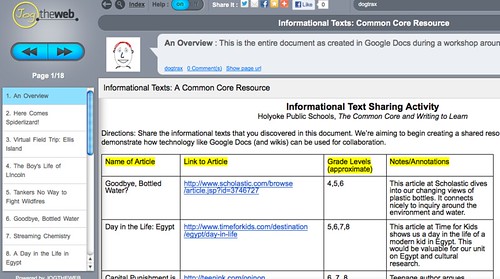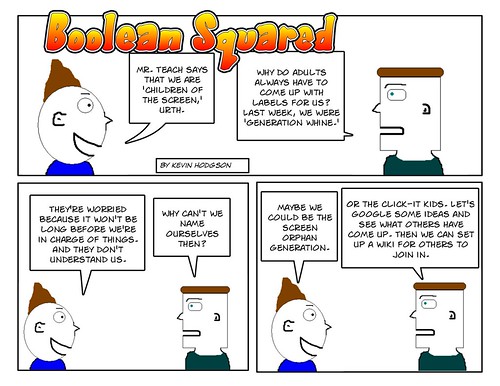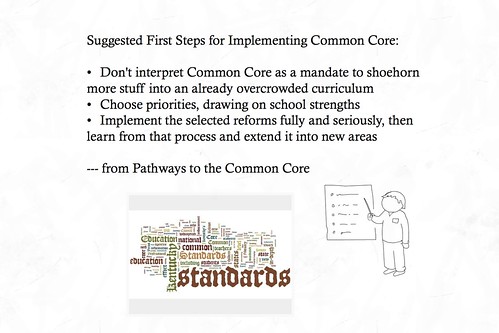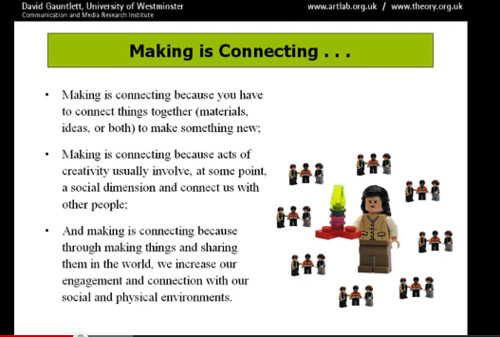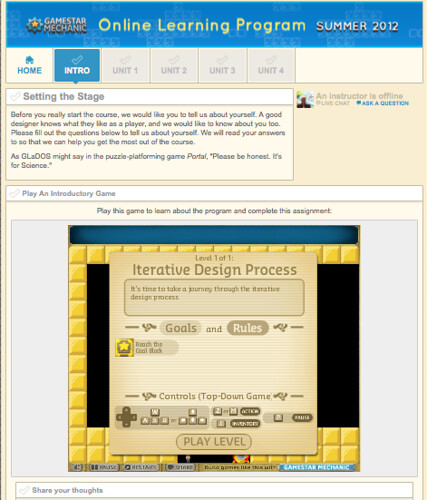
I’m enrolled as a “student” in the new Gamestar Mechanic Summer Gaming Online Learning Program, and I have to say: so far, so good. I took up an offer by the National Writing Project to enroll for free (there is a cost for kids) because I use Gamestar in my classroom but also because I want to learn more about how to give constructive design feedback to my students. (NWP has done some collaborative projects with eLine Media, which owns Gamestar, so I am taking advantage of those connections as best as I can)
This morning (after a nice phone call with my “teacher” the other night to orientate me to the expectations which are obviously modified as I am a teacher, too), I dove into the program with gusto. It’s set up pretty intuitively and shows that the Gamestar folks really are thinking through the ways to make it an engaging learning experience. There are “tasks” with questions, videos and games to play, and each section ends with a game-building assignment that starts off with a simple brainstorming game design, and is now leading into the areas of how to construct an interesting platform game. There is even a place to chat with the Gamestar instructors, or leave questions, and you can monitor your progress.
It feels a bit like a combination of some online classes that I have taken with elements of the flipped classroom thrown in. I imagine the kids who are enrolled in this summer program will get a lot out of it. I really did like how the introduction to the summer program was a game that used the “iterative design” model as part of the game itself, reminding us about the ways that games develop from brainstorming, through design, feedback, redesign, feedback, redesign.
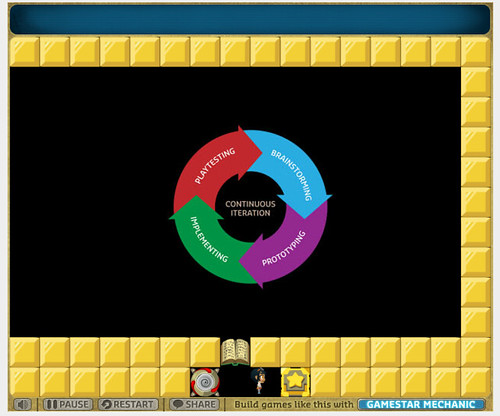
In case you are wondering, I am hoping to build out a game based on my recent reading of Kate Messner’s Eye of the Storm, using a player navigating through a fierce storm and the impact of Global Warming as my “story.” I have no idea how it will turn out.
Peace (in the game),
Kevin
